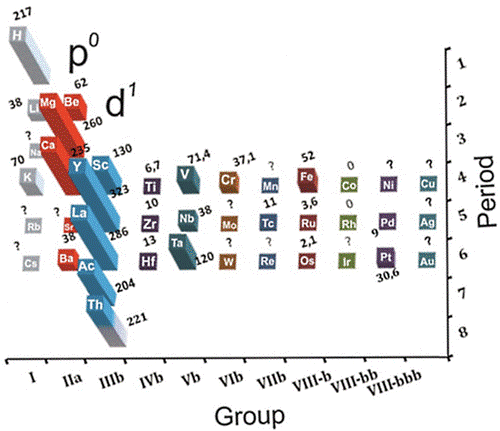Scientists from Skoltech have demonstrated the high-temperature superconductivity of actinium hydrides and discovered a general principle for calculating the superconductivity of hydrides based on the periodic table alone. The results of their study were published in The Journal of Physical Chemistry Letters.
High-temperature superconductivity is a phenomenon of zero electrical resistance in certain materials at temperatures above -196 oC (the temperature of liquid nitrogen) that physicists, chemists and materials scientists worldwide have been intensely researching for decades, as room-temperature superconductors open up vast prospects for the power industry, transport, and other technology-driven sectors. Currently, the record holder in high-temperature superconductivity is hydrogen sulfide (H3S), which functions as a superconductor at 1.5 million atmospheres and temperatures of down to -70 oC. Such pressure levels can only be attained in a lab environment, not in real life, and the temperature is way below room temperature, so the search continues for new superconductors. Perhaps an even higher-temperature superconductivity can be attained in metal-hydrogen compounds. Yet the link between chemical composition and superconductivity was unclear, leaving scientists to puzzle out by trial and error.
A group of chemists led by Artem R. Oganov, Professor at Skoltech and the Moscow Institute of Physics and Technology, discovered that certain elements capable of forming superconducting compounds are arranged in a specific pattern in the periodic table. It was established that high-temperature superconductivity develops in substances containing metal atoms that come close to populating a new electronic subshell. Metal atoms inside the crystal are assumed to become highly sensitive to the positions of the neighboring atoms, which would result in strong electron-phonon interaction ‒ the underlying effect of conventional superconductivity. Based on this assumption, the scientists supposed that high-temperature superconductivity could occur in actinium hydrides. Their supposition was verified and confirmed: superconductivity was predicted for AcH16 at temperatures of -69-22 oC at 1.5 million atmospheres.
“The very idea of a connection between superconductivity and the periodic table was first put forward by Dmitry Semenok, a student at my Skoltech lab. The principle he discovered is very simple and it is really amazing that no one had hit upon it before,” says Artem Oganov.
Contact:
Alina Chernova,
Scientific Communications Manager
Phone: +7 905 5653633
alina.chernova@skolkovotech.ru
*****
The Skolkovo Institute of Science and Technology (Skoltech) is a private graduate research university. Established in 2011 in collaboration with MIT, Skoltech educates global leaders in innovation and entrepreneurship, develops advanced scientific knowledge, and fosters new technologies to address critical issues facing Russia. Applying international research and educational models, the university integrates the best Russian scientific traditions with twenty-first century entrepreneurship and innovation. Web: https://www.skoltech.ru/.
Contact information:
Skoltech Communications
+7 (495) 280 14 81

